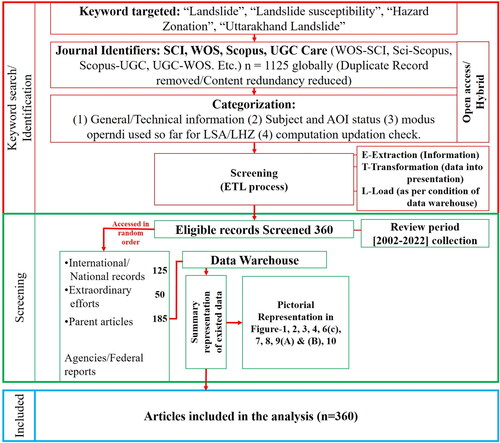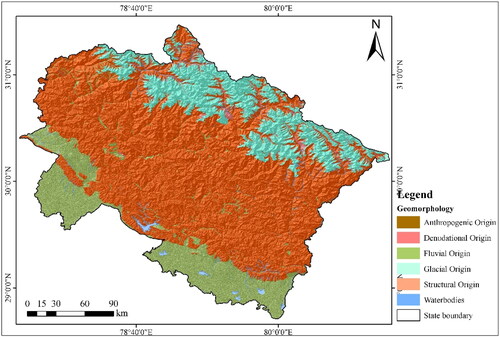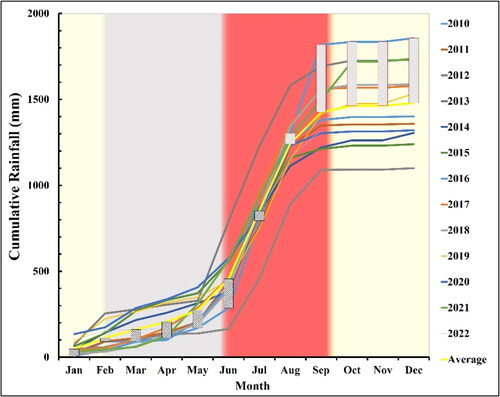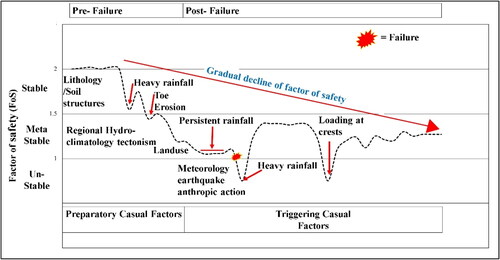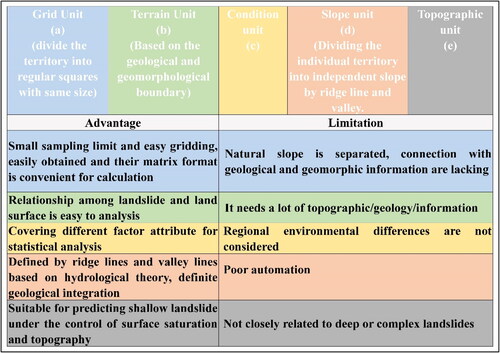Figures & data
Table 1. A basic approach for susceptibility modeling.
Table 2. Classification of basic approaches used in landslide susceptibility assessment/modelling.
Table 3. Classification of the failure associated with the composition.
Figure 3. Geological map view of Uttarakhand Himalayan and Himalayan geological stretch (modified after Yin Citation2005 and GSI Citation2021).
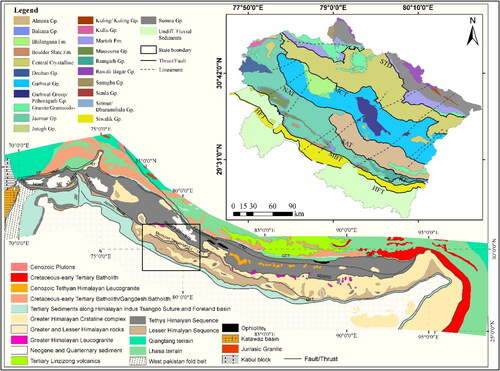
Figure 6. (A,B) Representation of precipitation day hour max trend in 95 administrative blocks of Uttarakhand.
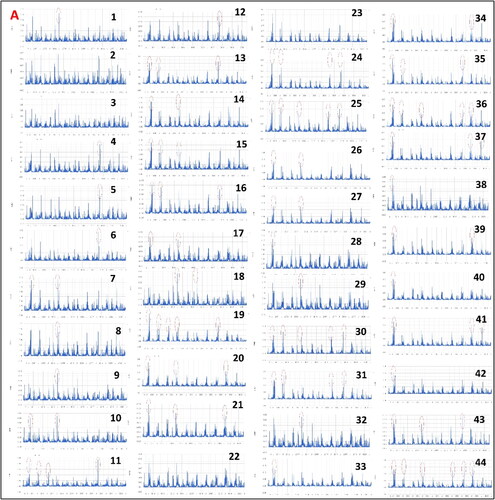
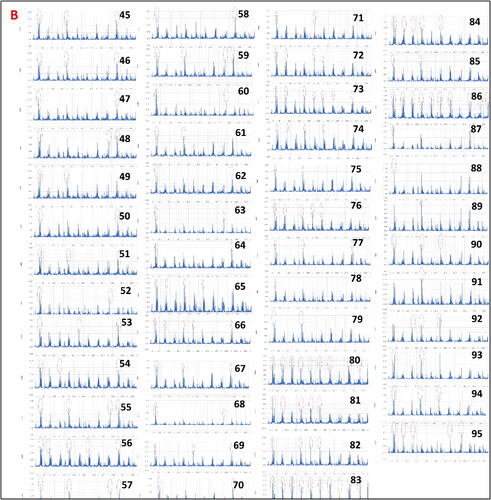
Figure 7. (A) ERA-5 modelled based precipitation observed for the administrative block-Champawat (ID-86), (B) extreme precipitation events in 95 administrative blocks for the study period, and (C) landslide distribution in the region with their vulnerability.
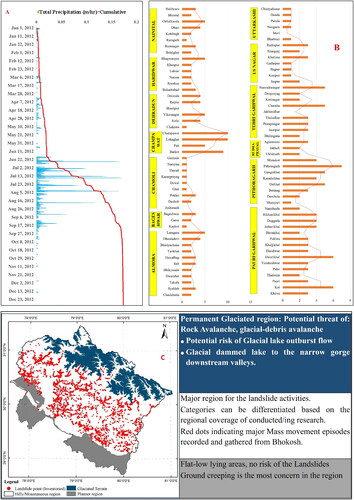
Figure 8. Seismic zonation, archival seismic density map with the structural framework of Uttarakhand Himalaya.

Table 4. Slope class distribution concerning the seismic zone and archives of seismic and landslide with rock type of the region.
Table 5. Characteristics of slope failure.
Figure 10. (A) Technique and data source used widely in LSM/LSA inventory as reviewed and (B) space-time distribution of slope failure in the region.
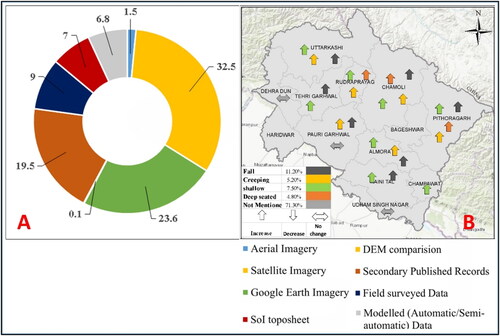
Figure 11. Causative factor used for the LSM/LSA and used by the articles acquired from the records.
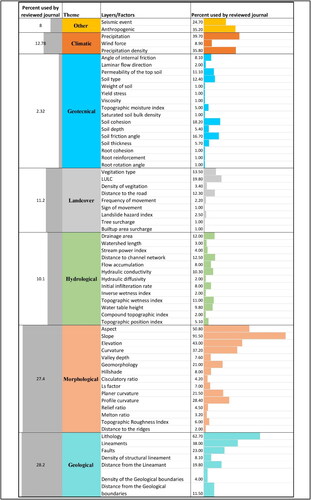
Figure 12. Globally open access/paid datasets for the natural hazard application (LSM/LSZ) model/approach.
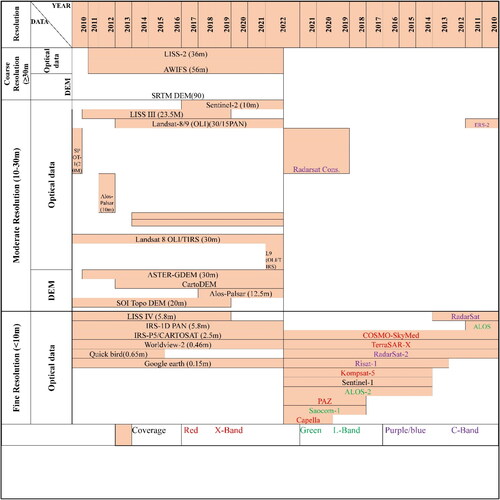
Figure 14. (A) Validation methods of LSM/LSA. (B) Radar diagram of articles published by the type of institution (C) for different applications, and (D) Processing technique on data collection.
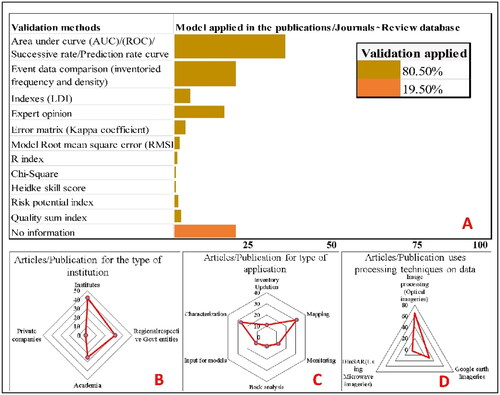
Data availability statement
All materials used for the review article compilation are properly cited. The datasets used and/or analyzed during the current study are available from the corresponding author upon reasonable request.

